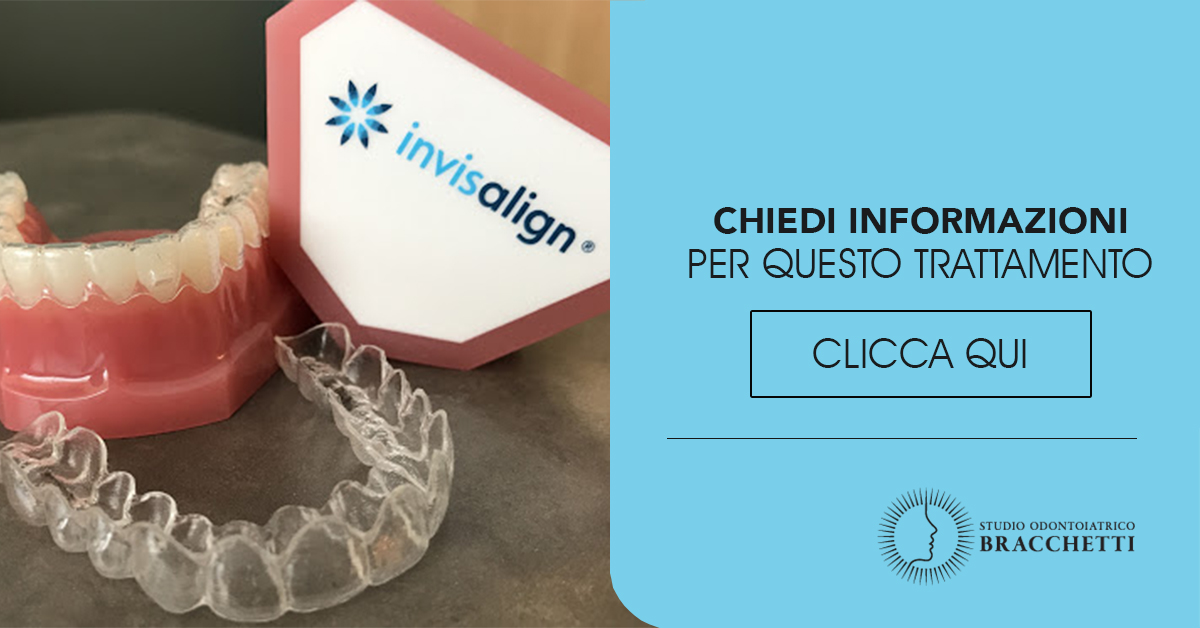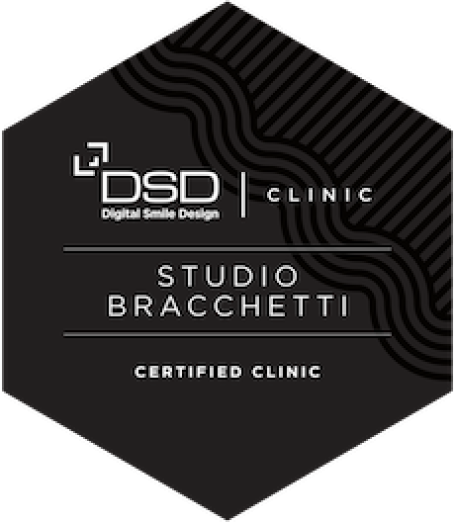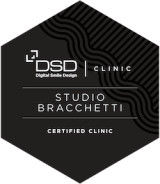Orthodontics with invisible aligners
It is the most popular method of the moment, everyone talks about and uses it, but the number of actual specialists who are trained to apply it properly can be counted on one hand. We are talking about the Invisalign system, the transparent removable aligners (or aligner) created specifically for the patient which allow you to align the teeth effectively and comfortably.
The effectiveness of this orthodontic treatment is confirmed by numbers and case histories. It is for this reason that years ago Dr. Veronica Bracchetti was one of the first orthodontists in Italy who choose to get the appropriate certification to offer this solution to her patients.
What are the peculiarities of Invisalign?
Certainly the aligner is the ideal solution for all adults or adolescents who do not intend to wear the traditional fixed brace and prefer a more comfortable and almost completely invisible system. The aligners are removed for eating, drinking, brushing, and flossing; they are also very light as they are made with a special plastic that is only 0.3 mm thick.
For which pathologies is this method indicated?
For dental crowding, the crossbite (when one or more upper teeth close on the inside of the lower teeth instead of the outside), the deep bite (when the upper teeth overlap the lower teeth excessively) and for excessive spacing between one tooth and another, that is, in reality for almost all types of malocclusions.
Thanks to a very advanced 3D Imaging technology, Invisalign is able to create, after the treatment planning and the indications provided by the doctor, a complete treatment plan for each patient, from the initial positioning of the teeth to the patients desired final goal.
The treatment consists of five main phases:
First visit, collection of recordings and taking digital scans, planning of treatment with clinical check and approval by the patient, creation of masks, and delivery with application of attachments.
During the first visit to the Bracchetti Dental Clinic, an initial analysis is performed to evaluate together with the patient, according to his needs and requests, the most suitable therapy to be implemented.
The more technical and in-depth examinations are then carried out, such as x-ray examinations, photographs and the detection of digital scans of the bite which are then sent to the Invisalign center in the United States.
The planning of the treatment follows with exchanges between the treating physician and the Invisalign center: a clin-check with the patient is then viewed on the screen which, when approved, will allow to proceed with the production and delivery of the aligners , after placing the attachments (small resin buttons applied to selected teeth to maximize the effectiveness and speed of treatment).
The masks are then replaced every week and appointments fixed every 4-6 weeks.
The results of this method are very accurate. The duration of the treatment is strictly related to the complexity of the case and therefore to the number of aligners needed to achieve the desired result, as well as to the collaboration of the patient, since the masks must be worn full time. Consequently, the costs vary according to the diagnosis, the complexity of the malocclusion and the duration of the treatment.
Differences between fixed braces and removable clear aligners
The main, obvious difference is that the traditional appliance is fixed, that is, made up of parts (orthodontic brackets, bands, arches), fixed to the teeth for the entire duration of the treatment. At each appointment, lasting about 30 minutes, the specialist decides how to intervene, replacing the arches and reactivating the system of forces applied in the most appropriate way. Once the objective in terms of aesthetics and function has been achieved, these are removed and replaced, as in the case of removable equipment, by restraint or maintenance devices.
Removable equipment, in particular for example the Invisalign system, uses removable transparent plastic aligners, which must be worn for about 22 hours a day, i.e. all day except at meals and during the oral hygiene routine. Their effectiveness is ensured by the high technology in the design of the masks both in terms of the material used and in terms of movement programming, which however cannot ignore the application of small "buttons" of transparent resin, the so-called attachments on the teeth. These allow the single tooth to move in the most effective, efficient, and rapid way and in the most predictable way possible.
In terms of the quality of the achievable result, the two devices, fixed and removable, are, if in the hands of experienced professionals, similar. Even the duration of the treatment today, compared to the latest innovations of the Invisalign system, is comparable. Simple treatments can last 6-9 months, more complex up to 18-24 months.
Appointments are fixed: in the case of treatments with fixed equipment lasting 30 minutes once a month, in Invisalign treatments every 4-6 weeks. The duration of the appointment in this case is about 15 minutes. / p>
The advantages of treatment with invisible masks are most certainly the invisibility of the equipment worn and therefore the it's large aesthetic value, compared to traditional fixed equipment in metal or ceramic (the last frontier in terms of innovation and technology in the field of fixed orthodontics, extremely effective, technological and with a lower aesthetic impact), a little more bulky and visible.
Even maintaining hygiene is certainly easier with the removable masks. Removing them allows you to proceed with a traditional oral hygiene routine.
Undoubtedly, emergencies, caused by possible detachments of fixed equipment or small abrasions and local nuisances, are almost completely eliminated.
On the other hand, the real limitation of removable equipment is the indispensable need for patient collaboration. Where with fixed equipment it is generally sufficient to show up for appointments, with masks, if worn discontinuously and irregularly, the effectiveness of the treatment is significantly jeopardized. The real discriminating factors in the choice of orthodontic equipment are therefore, in the final analysis, in the face of overlapping efficacy, costs and duration of treatment, aesthetic needs and the patient's willingness or not to collaborate adequately. Hence the indication "use of aligners in adult patients, but also in motivated and cooperative adolescents."
If you would like to make an appointment at the Bracchetti Dental Clinic in Milan click Request form - Or you can write us on whatsapp and if you want to talk to the secretary you can do so easily by calling the office by clicking here
















